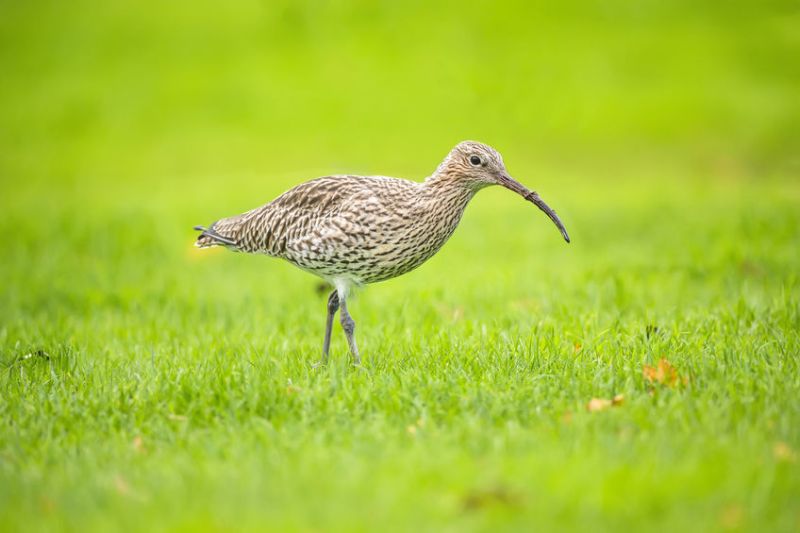
Farmers have hit back at claims over the role of farming in the decline of curlews and other species, saying environmental charities must take their fair share of the blame.
The RSPB (Royal Society for the Protection of Birds) claims farming practices are partly to blame for a drop of 80% in the number of curlews in Wales since 1990.
But farmers say environmental policies on vast areas of curlew habitat were based on advice from environmental charities and advisors - and that many of these have been particularly damaging for species such as curlews.
Around 40% of Welsh agricultural land is subject to environmental scheme rules, with the percentage far higher in key upland areas which were once core nesting areas for curlews.
The Farmers' Union of Wales (FUW) said many areas which were once full of nesting curlews have for two decades or more been in schemes that have reduced grazing drastically, and the curlews have now gone.
The union's president, Glyn Roberts, said: “It’s clear that the advice from environmental charities and advisors about reducing grazing was wrong.”
Ignored warnings
RSPB has admitted that vegetation overgrowth is having an adverse impact on suitable nesting habitat and that grazing levels need to be increased to help curlews and other species such as golden plover.
Mr Roberts added: “Overgrowth of vegetation on land which was previously ideal for curlews and other species is a direct result of undergrazing, often as a result of environmental scheme rules.”
He said that those farmers who took pleasure in the curlews which once nested on their land are now 'extremely angry' that their warnings about the adverse environmental impacts of removing animals from habitat were ignored.
“It’s welcome that this problem is finally being acknowledged by the likes of the RSPB, but there also needs to be some acknowledgement that the policies which led to drastic cuts in wildlife were based in the first place on advice and lobbying by environmental charities and advisors,” he said.
The RSPB’s state of birds in Wales report, published in December, states “...curlews show a preference for habitats with lower vegetation densities and only moderate rush cover” acknowledging that where livestock densities have been greatly reduced compared to historic levels “...it is highly likely that habitat conditions will have deteriorated for curlews.”
Increased risk of wildfires
Undergrazing also represented a risk to upland species due to the increased risk of wildfires during nesting periods, Mr Roberts said.
“In only the last few days we have seen major fires on upland areas of Wales and England on land where undergrazing and a lack of management has led to vegetation becoming overgrown and more susceptible to wildfires.
“Grazing and managed burning at appropriate times of the year previously led to ideal habitat for curlews, but we now face a situation where undermanagement and undergrazing mean fires are burning out of control during nesting season,” he said.
RSPB research has also highlighted the role predators play, with one study of curlew breeding success finding that predation accounted for about 90% of nest failures - with foxes and crows found to be among the major culprits.
The charity said the positive role predator control plays in ensuring curlews and similar species successfully raise young.
Despite this, the FUW said farmers are 'sick and tired' of being scapegoated by some as being responsible for species decline.
Mr Roberts said: “Many of the most problematic predators are harboured by Welsh government forestry plantations, and efforts by Natural Resources Wales to control them are now negligible, whereas the Forestry Commission previously paid significant sums for pest control.
“It is high time the full picture was made clear - including the role that poor advice from NGOs and others about reducing sheep numbers, forestry plantations and other factors have had in destroying habitat and wildlife,” he added.
